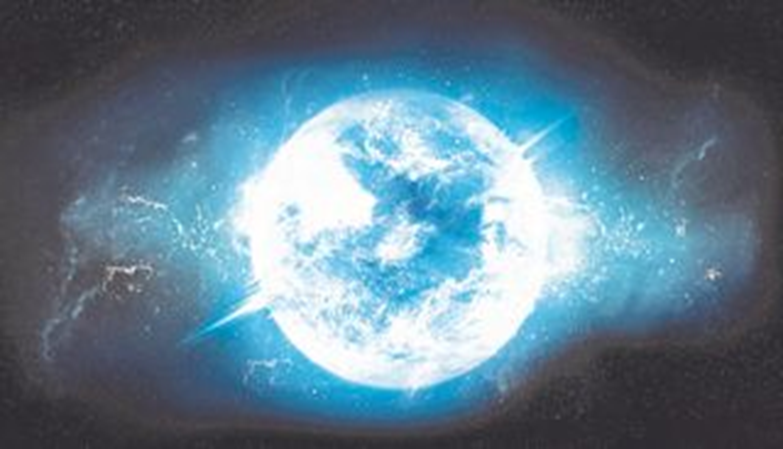Facts about the white dwarf

What is a white dwarf (white dwarf)? When the smallest stars reach the end of their long evolution—those stars that are up to eight times as dense as our Sun—they become white dwarfs. These ancient stars have incredible density. A teaspoon of its substance is equivalent to the size of an elephant on Earth - 5.5 tons. White dwarfs typically have a radius equivalent to only 0.1 of the radius of our Sun, but their masses are roughly equal.
Stars like our Sun fuse hydrogen into helium in their cores, while white dwarfs are stars that have burned up all the hydrogen they once used as nuclear fuel. The fusion occurring in the star's core results in heat and external pressure, which form a sufficient pulling force in a state of equilibrium due to the internal push of gravity resulting from the mass of the star. When the hydrogen used as fuel runs out and fusion slows, gravity causes the star to collapse in on itself.

White dwarf
Red giants
The star's temperature rises further as it condenses and compresses, burning off the last remaining hydrogen and expanding the star's outer layers outward. At this point the star becomes a large red giant.
Due to the red giant's large size, its temperature spreads to the surface layers and is moderate, but its core remains red hot. Red giants only exist for a short time - about a billion years - compared to the ten billion years that the same star might have spent burning hydrogen like our Sun.
Red giants are hot enough to convert helium in their cores, fusing hydrogen into heavy elements like carbon. But most stars are not dense enough to create the pressure and heat needed to burn heavy elements, so fusion and heat production stop.
The brightest star in the night sky, Sirius, or the dog star, greatly outshines its white dwarf companion, Sirius B. Sirius B, the nearest known dwarf star, is 8.6 light-years from Earth.

More explanation
Such stars eventually blow out the material from their outer layers, generating an expanding surrounding layer of gas called a planetary nebula. The star's hot core remains inside this nebula - where it is crushed by gravity, forming a high density - as a white dwarf with a temperature of 180,000 degrees Fahrenheit (100,000 degrees Celsius).
Eventually - over tens or even hundreds of billions of years - the white dwarf cools until it becomes a black dwarf that does not emit any energy. There are no known black dwarfs - yet - because the oldest stars in the universe are only 10 billion to 20 billion years old. Estimating how long it takes a white dwarf to cool can help astronomers learn a lot about the age of the universe.
Ancient white dwarf stars shine in the Milky Way. Stars like our Sun fuse hydrogen in their cores, turning it into helium. White dwarfs are stars that have burned up all the hydrogen that was used as nuclear fuel.
But not all white dwarfs will spend thousands of years cooling themselves. Dwarfs in a binary solar system may have enough gravitational pull to collect material from nearby stars. When a white dwarf accumulates enough matter, it reaches a stage called Chandrasekhar. In this case, the pressure in the center becomes very great, causing fusion to begin and the star to explode in a thermonuclear supernova, i.e. a supernova explosion.
Source: websites

